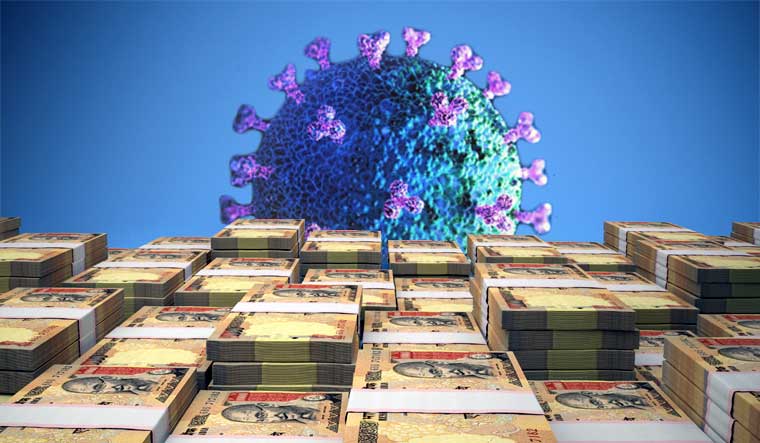Arun Singh, Chief Economist at Dun and Bradstreet India, leads a team that works on macroeconomic research, modelling and forecasting at the US-headquartered firm. Singh's work spans quantitative and qualitative economic research, econometric modelling, analytics and industry research across sectors that includes infrastructure and real estate, public finance, monetary and fiscal policy, external sector etc. Singh and his team are known for carrying out pragmatic and solution-oriented analyses of strategic economic and business developments, thereby, aiding in informed decision-making. Singh received his doctorate from Mumbai University and before his tenure at Dun and Bradstreet India had also served as an economist with Tata Services Ltd, where he handled projects about in-depth analysis and research on various economic issues.
Singh talks to THE WEEK on different issues of the economic aspects related to the lockdown and how fast different sectors are expected to bounce back once the lockdown is over.
What is your estimate on the possible losses for Indian businesses due to the COVID-19 pandemic?
The COVID-19 outbreak has caused severe demand destruction across multiple sectors. Among the worst-hit sectors are the gems and jewellery, entertainment, hospitality, transport, tourism and livestock. The livestock sector is experiencing weekly losses to the tune of Rs 7-8 billion from the sale of chicken alone. The tourism sector is expected to have foregone revenues of Rs 350 billion from foreign tourists alone during March and April, combined.
 Arun Singh
Arun Singh
Besides this, the delay in payments has long been a primary problem for the Micro, Small and Medium Enterprises (MSMEs). Only 53 per cent of large companies in India pay their suppliers on time. A slowdown in demand due to the outbreak of COVID-19 may force large companies to scale down their production. The ensuing cash flow disruptions will lead to delayed payments to MSMEs, triggering an avalanche of credit defaults and permanent business closures of highly leveraged MSMEs. Depth of the impact depends on how soon the virus is contained and how soon businesses resume their operation.
How soon do you foresee the recovery path of different businesses? Kindly elaborate on the time taken for different businesses once the pandemic ends.
Sectors such as drugs and pharmaceuticals, retail and wholesale trade and livestock may take up to six months to recover after the COVID-19 outbreak subsides. Since a majority of products in these sectors fall under the category of essential commodities, these sectors will recover sooner than sectors such as logistics and metals, which may take up to a year to recover. Sectors such as automotive, electronics, gems and jewellery, banking, entertainment, tourism and hospitality may take more than a year to recover. Many of these sectors are highly reliant on export demand. Hence, global recessionary pressures coupled with domestic weakness will prolong the recovery of these sectors.
What are the possible areas or segments of Indian businesses that are likely to defer and why?
Businesses are most likely to defer or even cancel planned capital expenditure. This is because investments in areas such as facilities management have a direct impact on the bottom line of companies. Product launches, especially in sectors such as automobiles and consumer durable goods, are expected to be postponed due to muted consumer spending. Businesses may also either reallocate out of home advertising spending towards digital channels due to social distancing or defer it due to demand uncertainty.
What will be the new normal as far as the Indian corporates are concerned?
Periods of recession are positively correlated with higher delinquency rates. Hence, the new normal for B2B marketers would be adding ‘risk’ as a dimension for account selection in addition to fit and intent. The COVID-19 outbreak has forced many businesses to rethink their operating model. In-person sales meetings are no longer a viable option for the foreseeable future. Hence, selling has moved to virtual meetings, phone calls and direct mail. Similarly, large trade shows and conferences have been cancelled, cutting a major source of leads. Therefore, digital customer engagement strategies are moving to webinars and social media.
What possible steps can be taken over the next six months to regain business confidence particularly in the segments that have been hit hard?
According to the International Monetary Fund (IMF), countries have so far taken fiscal actions amounting to around $8 trillion to mitigate the economic implications of COVID-19. These precautions could help financially secure companies that require short-term liquidity solutions. In India, the central government could announce more relief measures, particularly for the MSME sector. These may come in the form of multiple tranches rather than a single big bang package. This is because the crisis is still unfolding and there is a huge uncertainty about the duration of the COVID-19 outbreak and the extent of its impact.



